How to stay safe at the beach and in the sea
- Published
Twelve people have died in less than a week following a series of incidents around the UK and Channel Islands coastline.
Five men died after being pulled from the water at Camber Sands in East Sussex, while two-year-old Mckayla Bruynius and her father died after being swept off rocks in Cornwall. Other fatal incidents included a mother and son who died in the sea off Aberdeen.
So what are the greatest risks at the seaside and how can they be avoided?

Should you stick to beaches with a lifeguard?
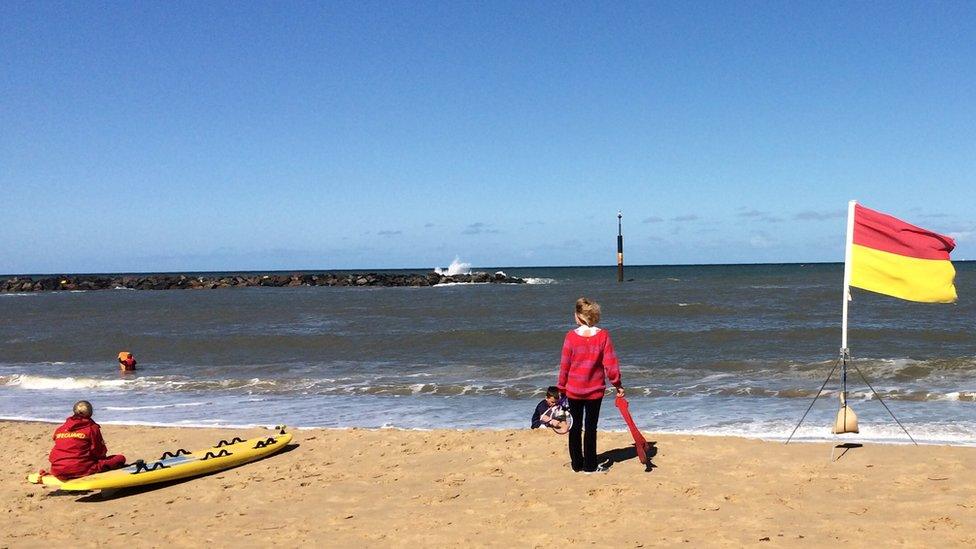
The Royal National Lifeboat Institution (RNLI) urges people to "respect the water and visit a lifeguarded beach, external".
This year, the RNLI has lifeguards on 238 beaches across the UK and the Channel Islands.
It says "seconds count" in emergencies at the beach - and its lifeguards responded to more than 17,000 incidents last year.
"For the best chance of survival, you need someone on the beach who can see the dangers develop: someone who can prevent accidents before they happen and respond instantly if they occur," it says.

What do the flags mean?
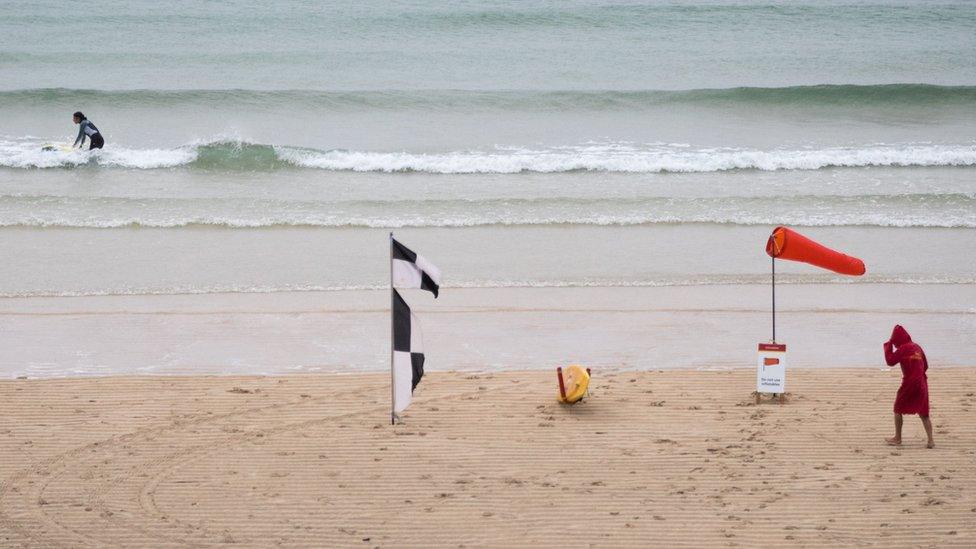
The area between two red and yellow flags (top picture) is patrolled by lifeguards and is the safest place to swim, bodyboard and use inflatables, the RNLI says
Areas between black and white chequered flags (see above) are for watersports like surfing and kayaking. People should not swim in these areas
An orange windsock (also above) denotes strong or offshore winds. The RNLI says inflatables should not be used in these conditions
A red flag means it is dangerous to go in the water

What is a rip current?
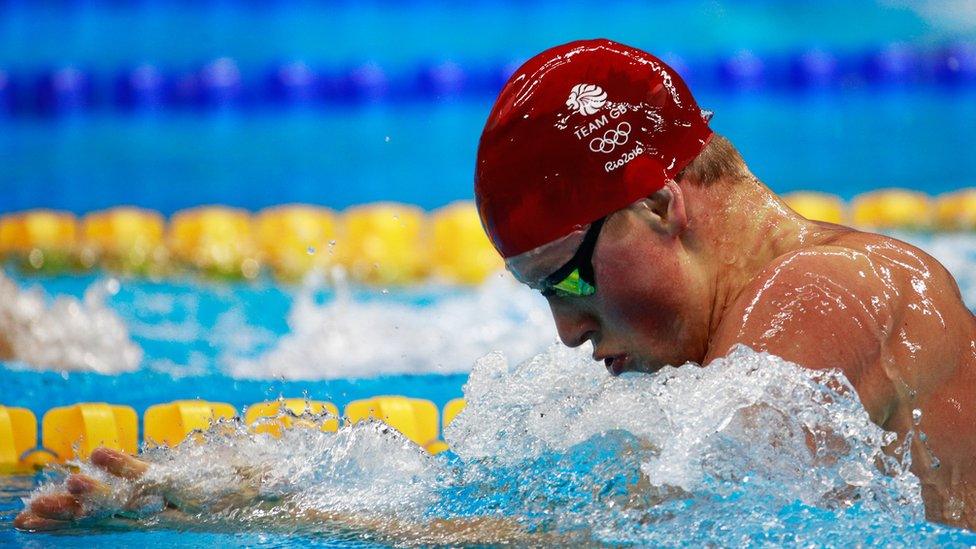
A rip current can move faster than an Olympic swimmer
Basically, a rip current is a narrow channel of fast-moving water, external.
"Rips can be very difficult to spot, but sometimes can be identified by a channel of churning, choppy water or debris on the sea's surface," the RNLI says.
These can be dangerous because they can drag people out to sea, and can reach up to 4.5mph (7.2km/h).
That may not sound fast, but it's quicker than Team GB swimmer Adam Peaty's world-record pace in the 100m breaststroke at the Rio Olympics.

What should you do if you get into trouble?
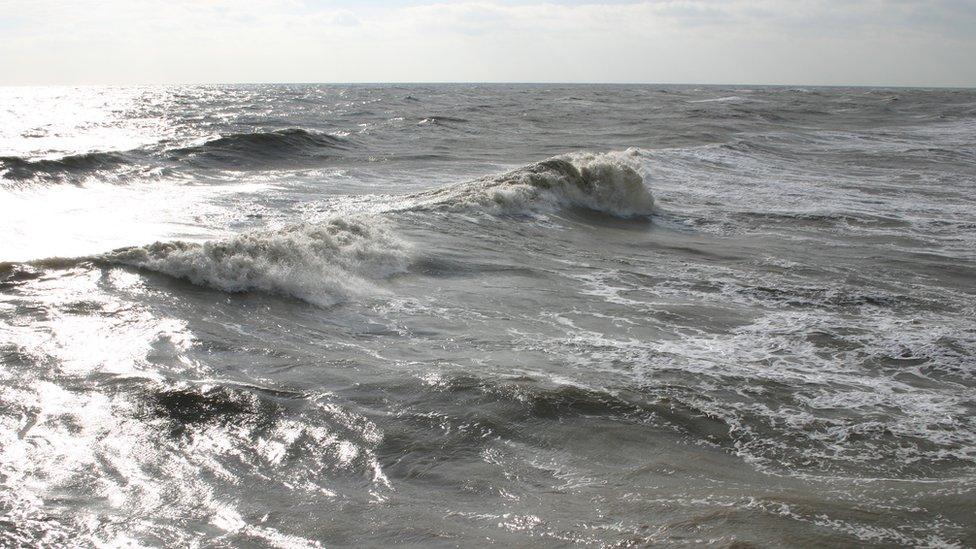
Keep calm, raise your hand and shout for help.
If it's a rip current, don't swim against it. As explained above, it's almost impossible to swim faster than a powerful rip, so attempting this will lead to exhaustion.
Stand rather than swim if the water is shallow enough. If not, swim parallel to the shore until free of the rip, then head for shore.
If you find yourself in the water unexpectedly, the initial shock may cause you to gasp and panic.
The RNLI advises people in this situation not to attempt swimming straight away, but to relax, float and try to find something buoyant before swimming towards safety if possible.

What if you see someone else in trouble?

Call 999 and ask for the Coastguard.
If you have something that floats or something the struggling person can hold on to, throw it to them.
The RNLI says: "Don't go in the water yourself - too many people drown trying to save others."

What do you need to know about tides?
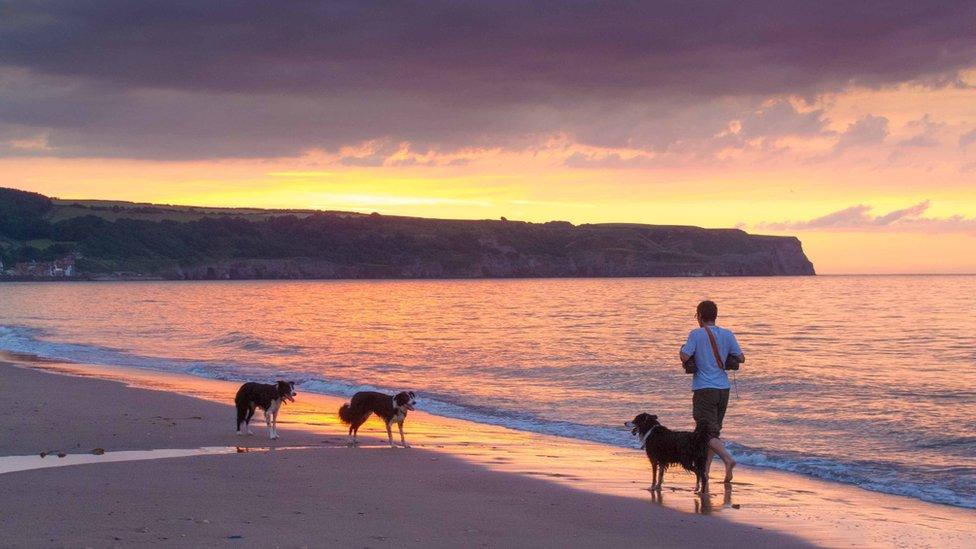
Many coastal emergencies happen when people get cut off by rising water.
Visitors are advised to check tides before walking along beaches, as well as watching out for signs about hazards such as falling rocks.
Tide timetables are available from the BBC.

When should you stay away from the sea?
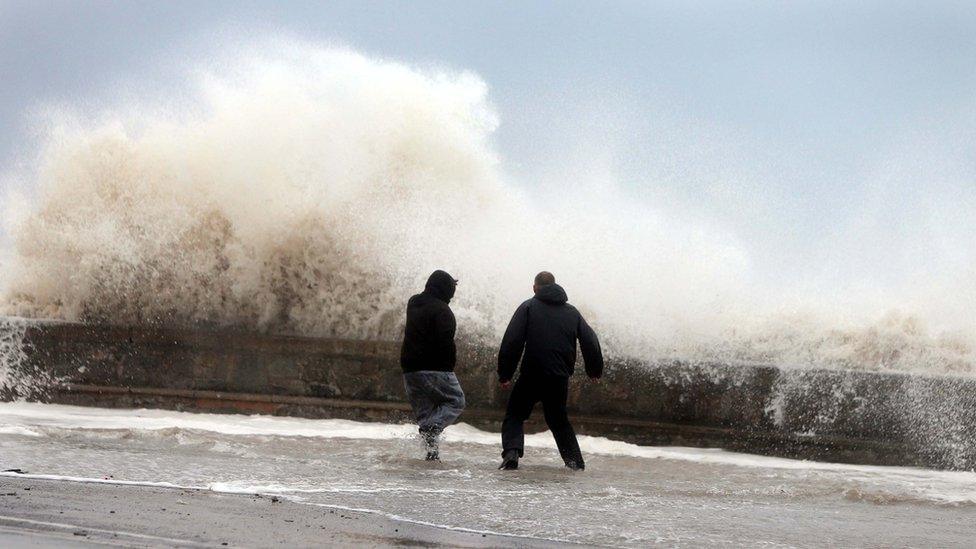
"Respect the water," says RNLI lifeguard manager Kester Sheppard.
"It's like a fire. If you could see a fire burning, you wouldn't walk towards it would you?"
He says many people who go near the sea in rough weather - for example, to take pictures - get caught out by an unexpectedly large wave, and he urges: "Don't go too close."
What is safe will depend on the conditions, but people should be aware of the risks and follow any advice from nearby signs and authorities, Mr Sheppard adds.

What are the other key safety rules?
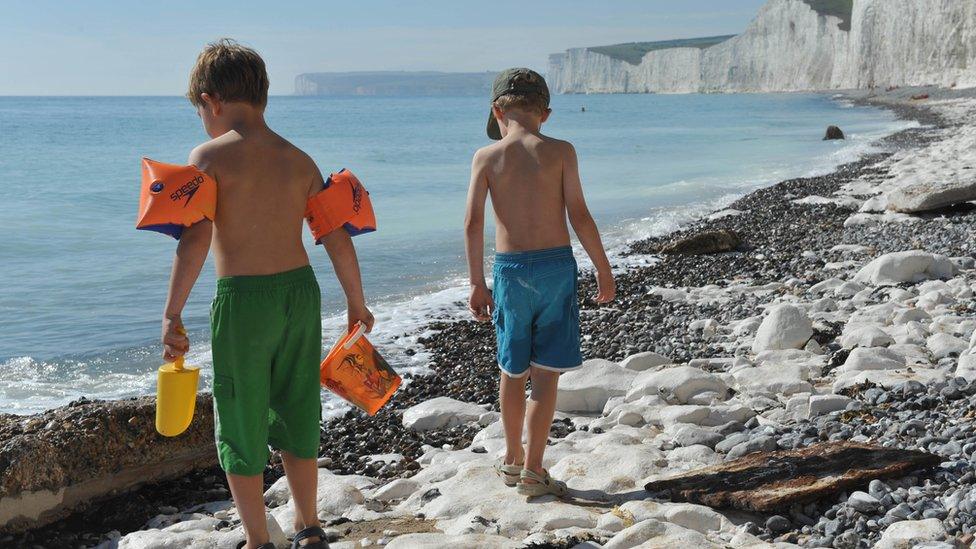
Never swim alone
Supervise children at all times
Don't go in the sea after drinking alcohol
Don't jump from height into the sea (known as tombstoning, external)

- Published25 August 2016
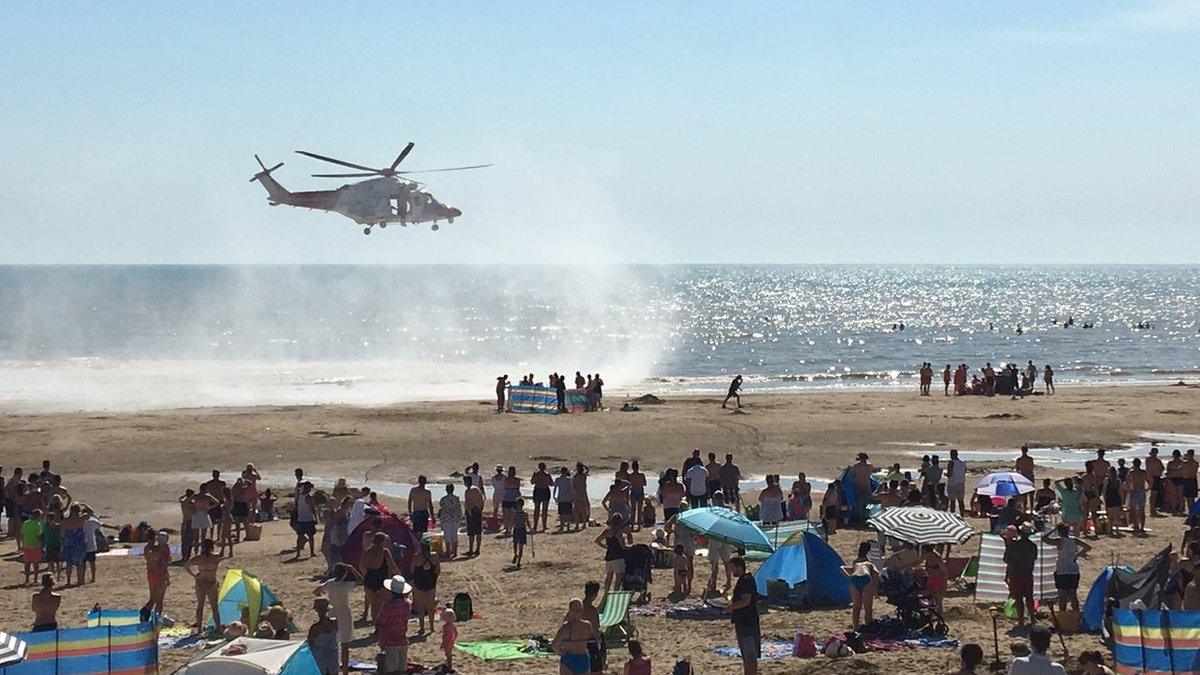
- Published24 August 2016

- Published21 August 2016

- Published22 August 2016

- Published21 August 2016

- Published21 August 2016

- Published21 August 2016
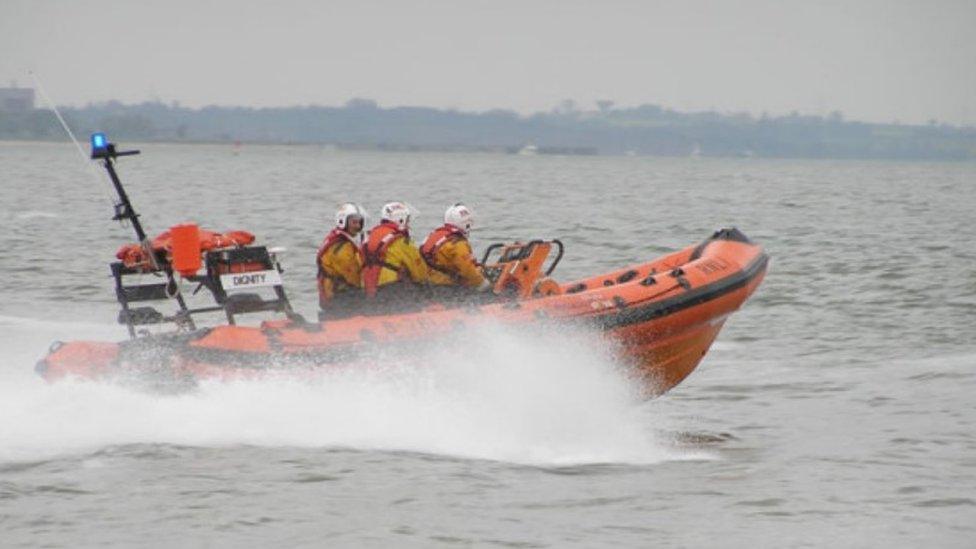
- Published21 August 2016
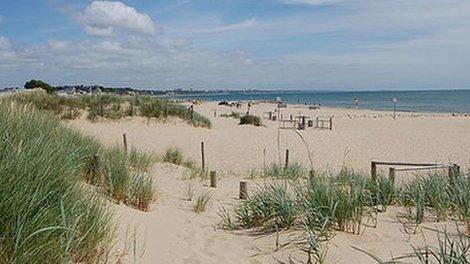
- Published21 August 2016
